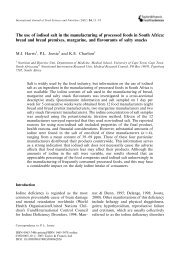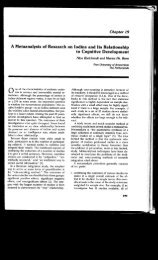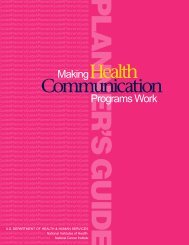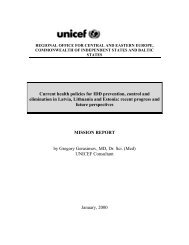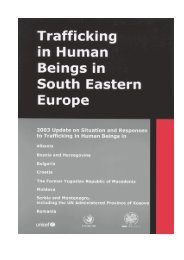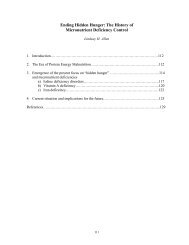Main Brochure.indd
Main Brochure.indd
Main Brochure.indd
You also want an ePaper? Increase the reach of your titles
YUMPU automatically turns print PDFs into web optimized ePapers that Google loves.
The new programme is part of a concerted effort being undertakenby the United Nations family of agencies, throughout the world, tohelp developing nations meet their Millennium Development Goal(MDG) obligations. Through a cooperative and complementarystrategy known as the United Nations Development AssistanceFramework, priorities are identified according to the needs of thecountry. Activities are pursued in a manner which ensures thatownership is exercised first and foremost by the government.Tajikistan published its Poverty Reduction Strategy Paper in 2002.This strategy, developed in a participatory process, acknowledgedthat macro-economic stability is the key to reducing poverty andnoted a number of critical sectors in need of far-reaching reforms.The government’s plan provided a macro-economic frameworkand promoted a multi-sectoral approach to reducing poverty, butit recognized that much had to be accomplished before a practicalstrategy could be implemented that was within the nation’s financialand institutional means.accepted as a foundation for policy reform, the recommendationsmade by the Committee. They have subsequently served as a programmingand monitoring framework for the government and itspartners. Tajikistan’s next report is due in 2005.With UNICEF leadership and growing ownership by national andlocal authorities, the momentum is such that the country can movein only one direction – forward, and UNICEF will be there, everystep of the way.In 2003, Tajikistan presented its first report to the United Nations onprogress towards achieving the Millennium Development Goals.The report concluded that in spite of the government’s firm commitmentto achieving- the goals, many are not likely to be met. Extremepoverty could “potentially” be halved, children “probably”will complete nine years of basic education and it “might” be possibleto lay the groundwork to stabilize HIV/AIDS, but a decrease ingender disparity, child mortality, maternal mortality and a halt tothe spread of malaria would not be fully realized by 2015.Tajikistan ratified the Convention on Rights of the Child in 1993 andsubmitted its first report to the Committee on the Rights of the Childin 2000. The Concluding Observations of the Committee noted Tajikistan’sefforts in adopting legislative and administrative measuresrelated to the rights of children as well as its ratification of majorinternational human rights treaties. The government validated and




